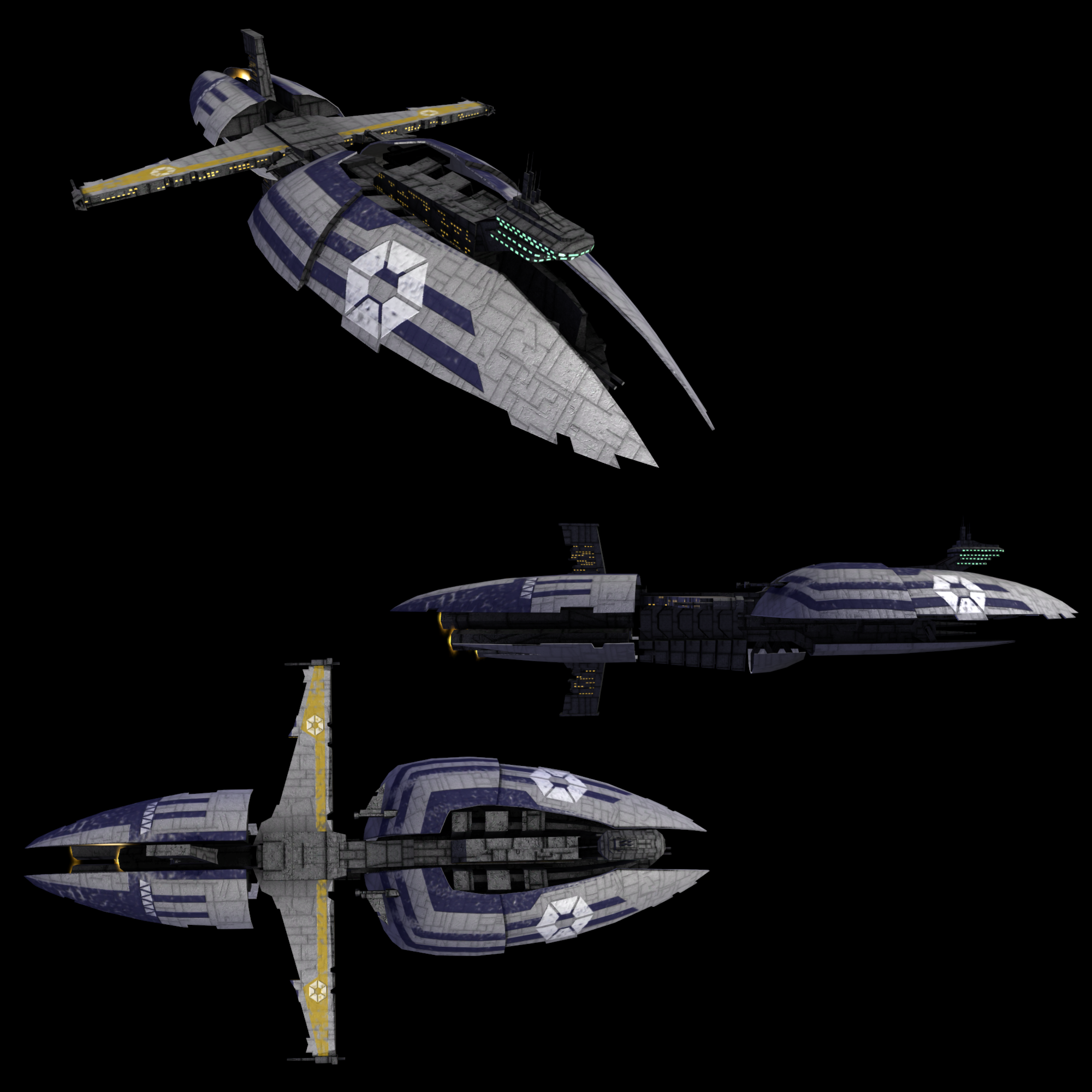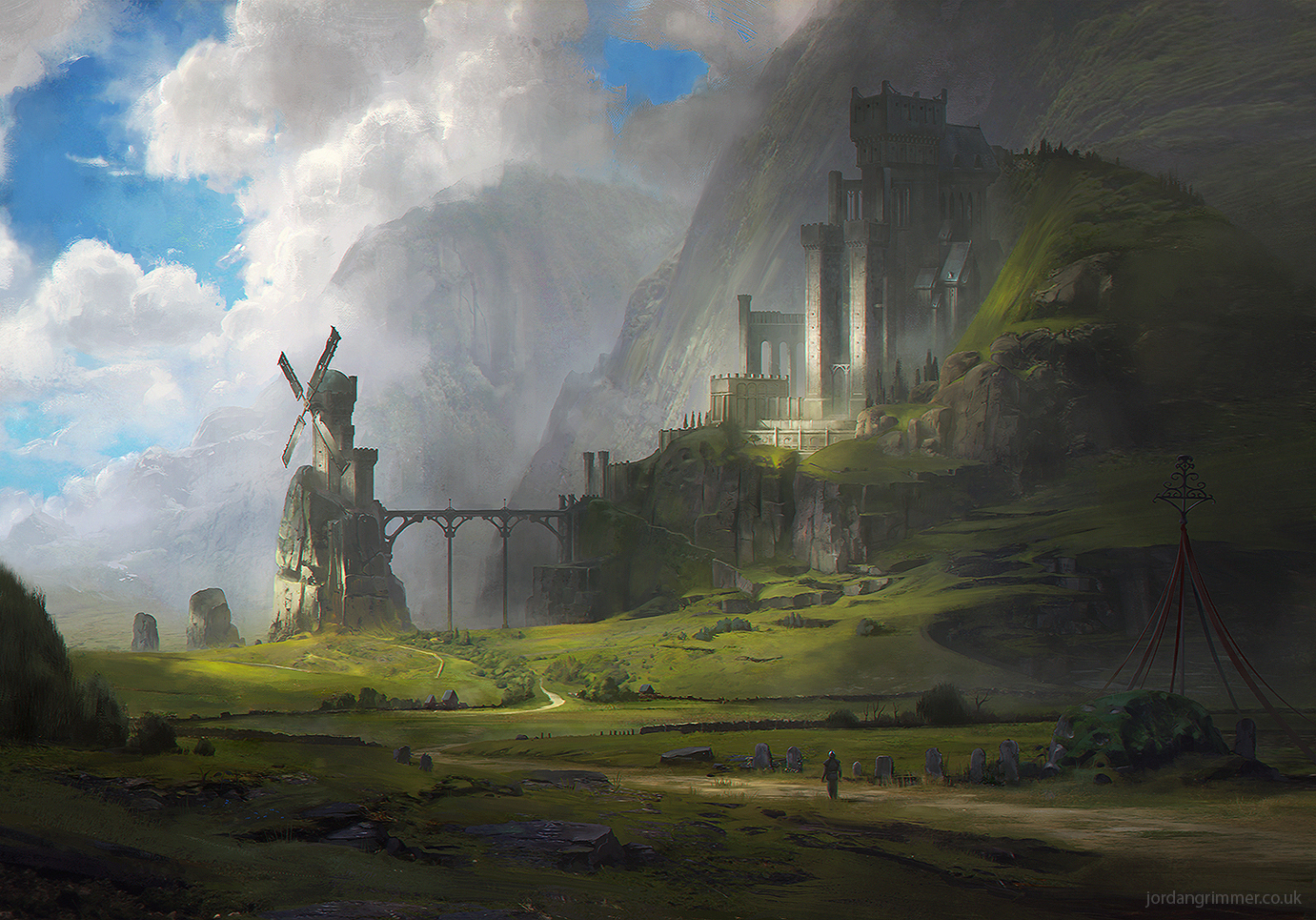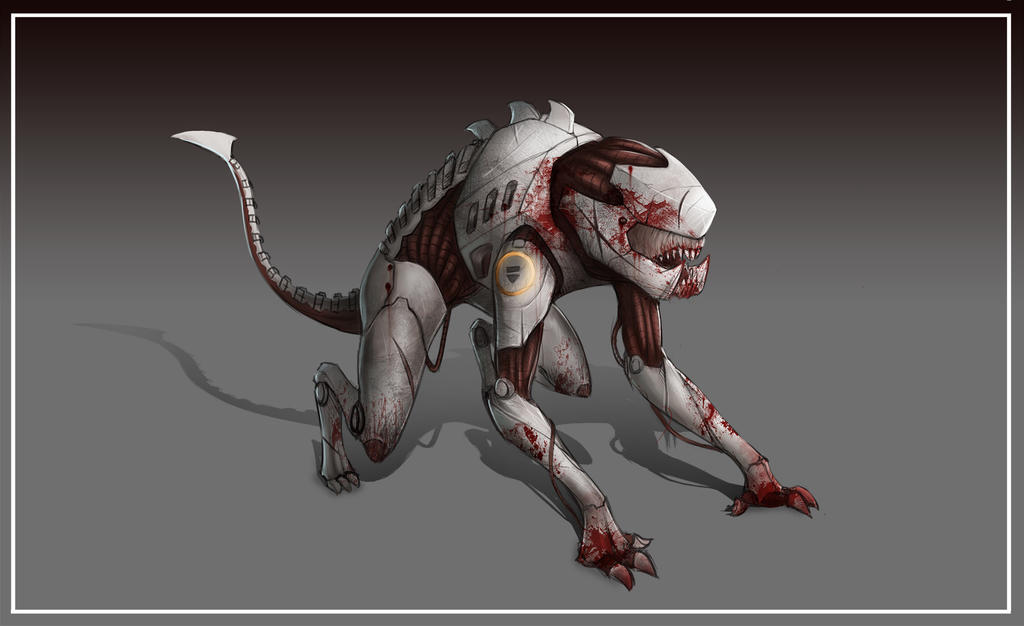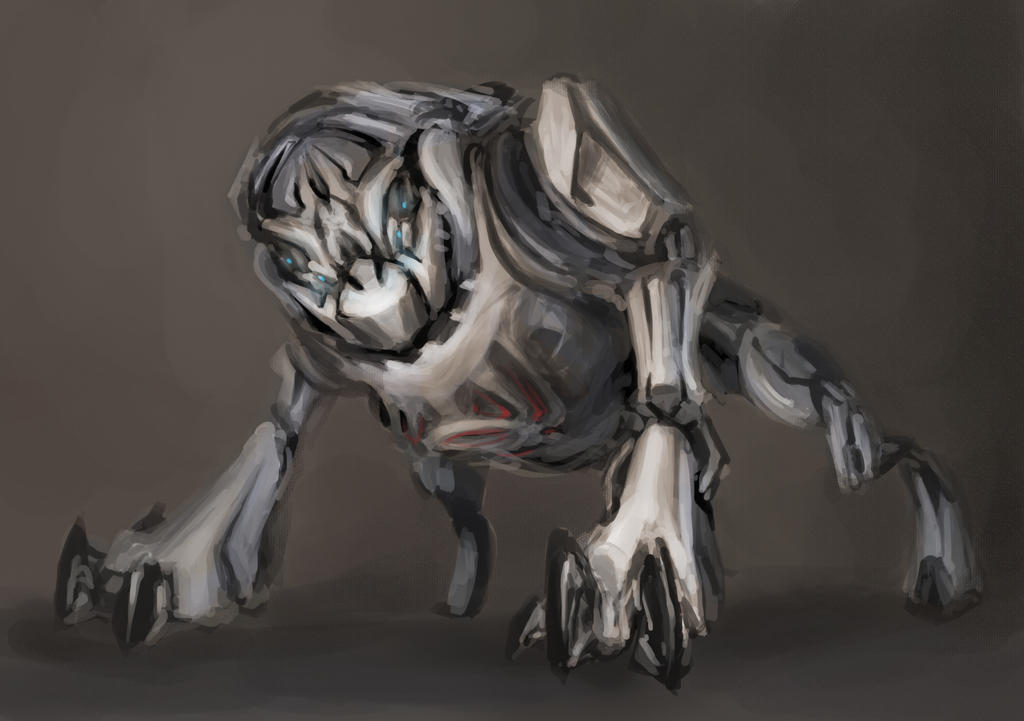Pretty much finished.
OUT OF CHARACTER INFORMATION
- Intent: To create one of the primary sentients on Fa'los and give writers another species to potentially RP as.
- Image Credit: ARTek92 | Hamsterfly | Earl-Graey | Candy-Janney | PawnAttack
- Canon: N/A
- Links: I'll be working on the other pieces of this puzzle, including the Iffoppo and Fa'los itself next so I can link them.
General Information
- Name: Salathene
- Designation: Sentient
- Homeworld: Fa'los
- Language: Salathese
- Average Lifespan: 80-100 years, roughly
- Estimated Population: Planetary
- Description: The Salathene are a humanoid species that have several reptilian and draconic features and a vast disparity between sexes. While the female sex (known as Sala'fi) is generally more human-like, the two male variants (Sala'bo and Sala'ha) are more reptilian and have more unique traits to their species. They are a very violent, territorial, malevolent species that has yet to master interplanetary travel (outside of a sect of space-faring Salathene) due to their low intelligence and insistence on mostly remaining in their archaic ways.
Physical Information
- Breathes: Type 1
- Average height of adults: Female Salathene are typically 1.8m while the male Salathene are typically 2.2m.
- Average length of adults: N/A
- Skin color: Red, orange, and blue.
- Hair color: Black, white, red, orange, blue, purple.
- Races: N/A
Distinctions
The Salathene can be split up into three separate variants, one being the
Sala'fi, the horned, hair-having, red-and-orange-skinned variant who make up all of the female population, the
Sala'bo, the blue-skinned, hornless, hair-having variant who make up half of the male population, and the
Sala'ha, the red-skinned, horned, hairless variant who make up the other half of the male population. All Salathene have tails, though the
Sala'fi grow the longest. Many consider the
Sala'fi to be the
true Salathenes, as they have enough variation going on amongst themselves (hair colors, horn shapes, skin colors, size, etc.), but the
Sala'bo and
Sala'ha would take offense to this. Although
Sala'fi do most of the hunting and scavenging, the male variants like to consider themselves the backbone of any society, holding down the fort and forming the front lines of any military attack.
The reason for there being two male variants is due to the development in the womb adjusting to what's needed of any given community. They like to believe it's the Horu (what they consider to be the force) guiding life into whatever role is most needed, but truthfully it's only a matter of the one giving birth and whether or not they require a level-headed child or not. This is caused by their emotional state up to a certain point in pregnancy. If an entire village is in peril and requires mindless violence for an extended period of time, most of the male children born will be Sala'ha. Birth happens the same as it does for humans, although the time it takes for a baby to form in the womb is less than half the time it would take for humans, and there is typically less pain involved (though not always).
Horns normally don't start growing until puberty (except for the
Sala'bo who never grow horns) while tails begin forming very early on as a toddler. Eye color varies wildly throughout all of the variants, but there are never any pupils and it's typically all one solid color. Claws at the end of fingers can be found in the
Sala'fi and
Sala'ha, as well as fangs, which the
Sala'bo share, though some would say that the
Sala'bo's fangs are more reminiscent of tusks. Variations in the development of
Sala'fi include various facial features that vaguely resemble that of the Sith Pureblood, the Devaronian, and the
Dravala, though nobody is certain on whether or not a connection exists.
Female Strengths
- Climbers: Sala'fi are exceedingly good climbers, utilizing their long tails to scale both trees and cliffs.
- Hunters: Quick, nimble, and born with a killer instinct, the Sala'fi make for some of the deadliest natural hunters of the humanoid variety.
- Versatile: The Sala'fi come in a wide variety, giving them the option to have several specialized roles among multiple individuals.
Male Strengths
- Juggernauts: The size and strength of the Sala'bo and Sala'ha alone are daunting enough, but adding on how resilient and sturdy they are, both physically and mentally, it becomes a much more frightening prospect.
- Communicators: Where the Sala'fi and Sala'ha fall short, the Sala'bo are typically quite skilled in communication and diplomacy.
- Shielded: The Sala'ha have both thick skin and thick scales, more resilient to blaster fire than most species (it's still gonna leave some bad marks).
Overall Strengths
- Force Sensitivity: Salathene have a high average of force sensitivity among their population, about 1 in 5. Those that travel off of Fa'los can typically find that they have a high affinity for lightsabers, as their species is known to be proficient with blades, especially those in tune with the force. They use the force to make themselves harder, better, faster, stronger, etc., such as enchanting their weapons, leaping great distances, running fast, basic physical abilities. It is also a common sight to see an affinity with pyrokinesis, but beyond setting a sword ablaze or spitting fire, it isn't the most impressive form of pyrokinesis seen in the galaxy.
- Unlimited Appetite: Very few foods in the known galaxy can't be used as nutrients to the Salathene. Their stomachs are designed as hardy as can be, and even things that are toxic to most other humanoid species, the Salathene can often eat and, at most, get a stomach ache.
Overall Weaknesses
- Hungry: Require an exorbitant amount of food to remain healthy and active, as their metabolism is exceedingly demanding. Despite this, some Salathene manage to become overweight as a result of gluttony.
- Primitive: The Salathene are seen outside of Fa'los, but the majority are stuck in their ways of killing one another with weapons of steel and generally don't hold as much of an interest in interplanetary travel. Even those who do leave Fa'los and join the ranks of the many factions across the galaxy, they're left less technically-inclined and less intelligent overall. Very susceptible to mind tricks. This is especially problematic when given the fact that there are other sentient species on Fa'los who are regularly traveling and trading with other planets and have much more advanced technology.
- Wasteful: Due to their rather extreme metabolism, Salathene are known to produce quite a lot of waste. The bane of long-lasting diplomatic relationships or, really, any relationships whatsoever with most other species. The Salathene themselves, however, see it as all too normal.
- Xenophobic: While there are those who learn to open up and accept other species, the Salathene as a whole are very intolerant not only to other species but often times other clans or kingdoms of Salathene. The only interactions they're willing to have with those they dislike would be slavery and angry snarling. But even if they happen across someone from a foreign species, they can learn to accept those who have been converted to their clan or kingdom's way of thinking. Unfortunately, many species are not susceptible to their ways.
- Weak in the Force: Salathene are quite commonly force sensitive, and yet what they can actually do with the force is... underwhelming. They can't dream of accomplishing any mind tricks, nor can they do much of anything involving the more unseen aspects of the force. They find themselves going into a rage even then when they don't balance out their use of the force, and the Salathene are not known for applying balance or moderation to anything.
- Untrustworthy: The Salathene are known to only ever be looking out for themselves, which has caused the downfall of many kingdoms and makes it very difficult to form any truly meaningful bonds or organizations in general. This hurts the most when they leave Fa'los, either as groups of Salathene or solo, and it more often than not gets them killed or in deep trouble. Those who have worked with Salathene in the past know to always keep an eye on them and keep their suspicions high.
Culture
- Diet: Meat, vegetation, spoiled or rotten foods, it doesn't matter. Salathene will eat pretty much anything, and the Sala'fi and Sala'ha will even eat bones. Their teeth and digestive system have evolved to chew and digest whatever they come across, becoming trash compactors in their own right. There are species on the planet Fa'los that have developed toxins that even a Salathene can't stomach, including the small race of sentient mushroom lifeforms known as the Iffoppo. A chef who can prepare an Iffoppo so that it isn't highly poisonous is coveted, as the Iffoppo are plentiful and can provide plenty of food if it wasn't for their natural poisonous defenses.
- Communication: Vocal language. Some revert to a more primitive form of communication, growling and grunting, often while butting heads/horns. It looks as if they would be killing one another at any moment, but it tends to result in agreements more than when spoken language is used.
- Technology level: Very limited, despite Fa'los having grown out of its dark ages with the native Selonians being interplanetary. They mostly rely on weapons made of steel and wood, building castles and forts with stone and lumber. They sometimes ally themselves with the even more primitive native P'w'eck population, but "ally" is synonymous with "enslave" for many Salathene. A Salathene who can reliably ride a P'w'eck is regarded very highly among their own and, subsequently, reviled by P'w'ecks.
- Religion/Beliefs: Salathene typically believe that there is some form of cosmic energy, often referred to as the "Horu," that guides their actions and can even speak through chosen ones on occasion. These prophets are regarded as leaders, even among kingdoms that have an established monarchy. Those who can use "Horu" effectively are revered for their strength and spiritual prowess.
General behavior
A relationship between
Sala'fi and either of the two male variants is highly encouraged only to ensure that they remain as populous as they are, although relationships between any of the three variants are fine so long as any given clan or kingdom has an adequate amount of births each year. As for those who don't feel comfortable with the gender role they were born into, most often it will be at most controversial, though it can also be seen as the path that Horu has chosen for them. Despite the
Sala'bo fulfilling a genetically male role in reproduction, they are often seen as a gender of their own, as Salathene don't necessarily have "male" and "female" as genders, only their variant can describe such a thing as gender and the roles that they've attached to them. Being the only female sex among the variations of Sala'thene,
Sala'fi are typically expected to do most of the child-rearing and teaching after giving birth to them regardless of the child's variation, though the
Sala'bo are known to be excellent caretakers for their young. The
Sala'ha are outright disallowed to raise any children, as there is always a higher chance that they may abandon a child or simply eat them when they need food badly enough.
All variations of Salathene are typically quite sexually active, and long-lasting relationships are seen as a rarity. Sex is very much something they see as a form of social interaction, something to be done even among close friends, with very little cultural biases to only remain "faithful" to a single partner. Loyalty and faithfulness aren't common traits among them, and as such, backstabbing and betrayal are commonplace. Nobody is ever truly trustworthy outside of a caregiver or rare relationships that transcend their very nature.
Species that are native to Fa'los are typically long-standing enemies with most Salathene communities, and most Salathene communities are long-standing enemies with other nearby Salathene communities. They tend to be very territorial, often claiming the entire planet as Salathene territory, and so when a foreign species from another planet attempts to invade their land, rivalries or grudges are put on hold and the invading species is given no mercy. That is unless a particularly insidious Salathene decides to ally with them temporarily to put down another clan or kingdom, which is seen as a betrayal of one's own species and homeworld.
Sala'ha have a particular culture of killing and eating that revolves around taking pride in one's number of kills they've eaten and kept the skulls of.
Sala'fi and
Sala'bo tend to ignore this, not sharing the same importance in any number of kills or any truly barbaric competitions, though they would still be seen as more violent than most species. There are blood arenas all throughout Fa'los that are open to any given variation, but the
Sala'ha tend to be the ones to flock to them the most so that they can achieve more kills to eat. Despite it being cannibalism, it's seen as a waste of meat to do anything but eat fallen Salathene, especially in the colder season when food is less plentiful. It even helps to preserve the fallen, giving them purpose after death and allowing them to live on through whoever consumes them. The act of feasting is seen as one of the most important aspects of Salathene culture, regardless of what it is they may be feasting on. And yes, there is even a ceremony held around the
passing of important figures. As in, passing through the digestive system.
Salathene rarely ever have a working schedule, and they can go several days without sleep on a regular basis. Neither day nor night is preferable to them, as it makes no difference to them (benefits to hunting both during the day or the night, they hold no special prowess for either). However, they
can sleep for an impressive amount of time, sometimes to their detriment, but it comes in handy to carry a hammock with them so that they can sleep whenever they please, so long as there are trees.
Occasionally, Salathene will be seen using advanced weaponry looted from Selonian, and although there have never been rules against using weaponry such as blasters or cannons, they can't maintain them forever and few are able to learn how to reproduce them. Instead, they train in weapons of steel, becoming more comfortable with them at an early age.
Piercings are very common, sometimes shown as a sign of fearlessness and other times simply a fashion choice. Tattoos are less common, but still far from uncommon, some using it as permanent warpaint. More often than not, however, it's merely for the aesthetics, looking more attractive to others, etc.
Historical Information
Salathene have been present and sentient on Fa'los for thousands of years, though they haven't necessarily done any serious research themselves as to how long exactly their societies began forming, mostly due to a lack of technology. It also isn't known exactly when the Selonians and P'w'ecks came to be present on the planet, but it seems as if the two species went in opposite directions in terms of technological advancements. This allowed the Salathene to enslave the more primitive and tribal P'w'ecks of their planet and has caused many unsuccessful wars against the Selonians due to their advanced technology.
One such war, known as the Hopeless Struggle, lasted nearly a hundred years before the Salathene were finally soundly defeated and left with nearly half of the population they once had. This led to more splitting off into individual clans, some forming entire kingdoms and giving rise to great monarchs whose dynasties would last hundreds to thousands of years. One dynasty, known as the Hi'ward Dynasty, was responsible for the greatest kingdom ever known to Fa'los,
Gissea. At its height, it held a third of all Salathene and was unstoppable in its power until a
Sala'fi named Yaraku became a legend when she assassinated the ruling monarch with an elaborate, decade-long scheme to have her own agents become royal guards and gain the kingdom's utmost trust. The entire ruling family, as well as every guard who wasn't in on the plot, was murdered when the order was at last given, ending the Hi'ward dynasty and causing the collapse of the Gissean empire. There still remain to this day those loyal to Gissea, having formed what can only be described as a cult around the ancient civilization, calling themselves either the Gissean Knights or the Kingdom of the Dead.
Although there had been many force-users among them for thousands of years, none were given as much respect as the Order of Blades, which rose after the fall of Gissea as a way to put an end to the mass chaos that had ensued. Each member of the Order was carefully picked and extensively trained in the force, which the Salathene have always known as Horu. They were exceptionally skilled with a blade, riding in on their nexus and resolving conflict with devastating results, and it became common to hear about a member of the Order who had lost their mind and had to be put down for the safety of all. The Order didn't last, and it was finally disbanded after senior members decided that they had to push new recruits too hard for them to be mentally stable later in their lives.
With the vacancy of a true global law enforcement, the Salathene embraced their nature and crime became rampant once more, though the chaos was far from devastating. In fact, the Salathene thrived in it, shutting down any organizations that would hope to slow the spread of corruption. That was until a
Sala'bo by the name of Hotrav betrayed the entirety of the Salathene species during a Selonian invasion when he worked alongside them so that he could gain an advantage over his Salathene enemies. Hotrav was later executed by his own clan when it was discovered what he had done, making an example for anyone who wished to betray the Salathene ever again.
Around 400 BBY, a group of Salathene used Selonian technology to become the first interplanetary Salathene civilization, but weren't as skilled or knowledgeable in the technology available, forcing them to deal mostly on land or enslaving others who
could use the technology reliably. This was the beginning of the space-faring sect of Salathene, seen very rarely among the galaxy. Even fewer could be seen as a Sith, and even fewer still chose the path of a Jedi. Despite this, lightsabers (either stolen or bought) remain a common sight among the force sensitive, regardless of what they called themselves.
The majority of Salathene remained on Fa'los, however, and they would continue in their ways of giving in to their most primal desires, separated into their own individual corners of Fa'los.
In 811 ABY, one such corner came under the rule of a
Sala'fi known as Hosofet, an incredibly force-sensitive leader who knew no boundaries in her lust for power. She would sit on her throne day and night, silently meditating and losing herself deeper and deeper into the seemingly endless void of
Horu. Everyone on her continent knew her name and likely feared her, knowing that incurring her wrath would inevitably lead to their destruction. Nobody like her had come before her, and even though she gave birth to a daughter, few expect even her offspring to reach any level of power close to Hosofet's.
This lust for power slowly dissipated, even as Hosofet continued meditating more and more. Her throne had become iced over from its prolonged exposure to Hosofet, and eventually she herself would show signs that her own skin was forming icy fissures across it, her very presence chilling others to the bone physically. Her departure from her throne became less and less common, remaining perfectly still like a statue with her eyes remaining open. It was unclear if she had grown less powerful during that phase, but she remained ruler of the powerful kingdom of Rana'thep ever since, becoming known as the Frozen Queen.





















